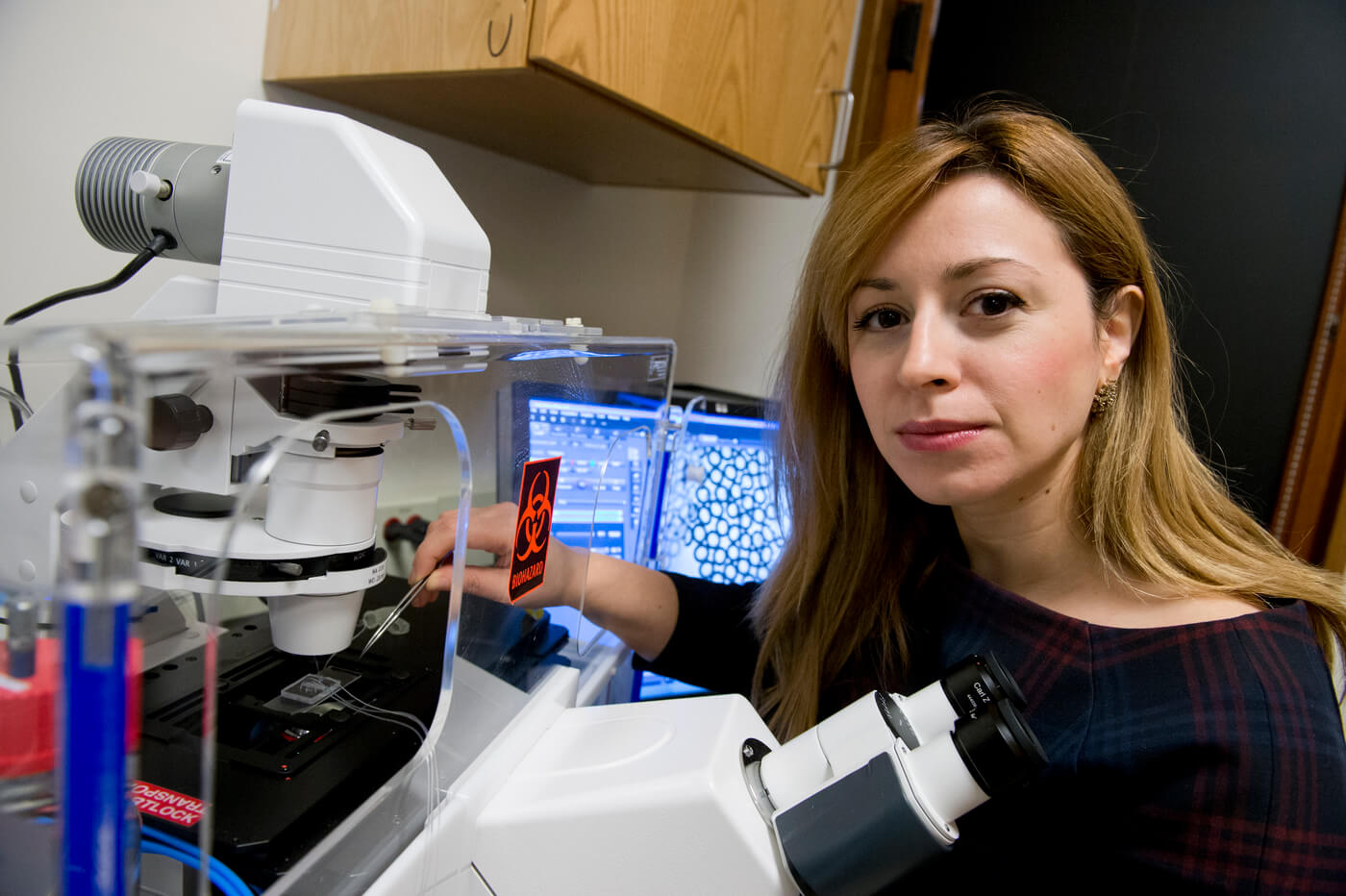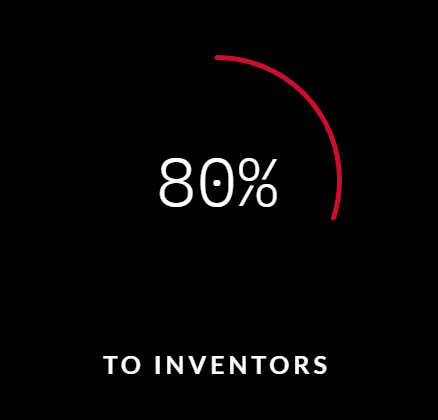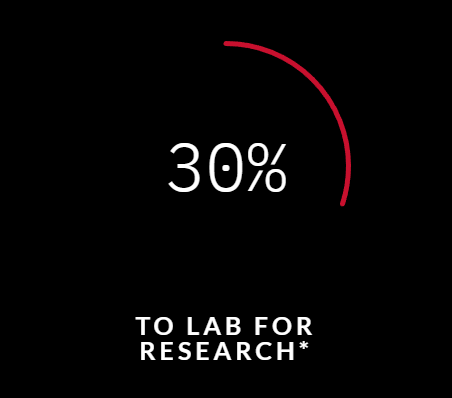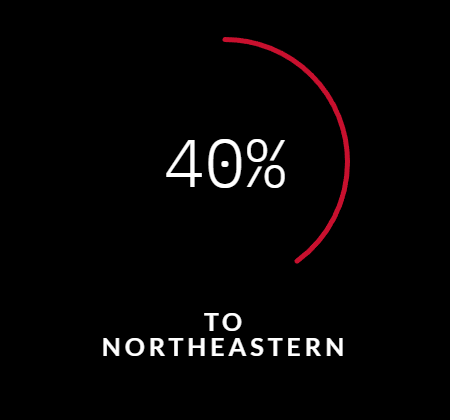THE CENTER FOR RESEARCH INNOVATION
INGENUITY DRIVES IMPACT
TECH TRANSFER WORKFLOW
The desire to have impact through research and innovations is a universal theme at Northeastern University. The CRI is your dedicated partner in this pursuit, offering strategic intellectual property protection, venture creation resources and access to corporate relationships. This diagram summarizes the steps the CRI takes to translate the university’s groundbreaking work into real-world solutions.

SUBMITTING A DISCLOSURE
WHAT IS A DISCLOSURE?

A disclosure is a detailed description of an invention that begins the process of protecting your research at Northeastern. Disclosures outline the novel, non-obvious, and useful features of inventions and are used to assess patent and commercial viability.
WHY DISCLOSE?

Disclosing, prior to working with the CRI, mobilizes university resources for protecting innovation and stimulates funding opportunities for accelerating your future research. Disclosing through the CRI broadens the horizon of academic and industrial collaboration and empowers the transformation from innovative idea to societal, worldwide impact.
WHEN SHOULD I DISCLOSE?

PROGRAM Spotlight
THE SPARK FUND
The Spark Fund helps Northeastern researchers bridge the gap between promising lab results and demonstrating a commercially viable prototype. Our grants and programs catalyze state-of-the-art technologies, advancing Northeastern inventions through prototyping, validation, and industry input.
INNOVATORS TOOLKIT
FAQs
What is an Invention?
An invention is “any new and useful process, machine, manufacture, or composition of matter, or any new and useful improvement thereof…” (35 U.S.C. s. 101). Inventions can be protected by patents (and sometimes, other intellectual property rights). Patents give you the right to exclude others from making, using, selling, importing, or offering your invention for sale. The only way someone can use your invention without subjecting themselves to substantial monetary liability is by obtaining a license to your invention. An invention can range from pharmaceuticals and medical devices, to robotics and software.
I'm a student and I think I invented something. What do I do?
If you are an undergraduate or graduate student and your work is not supported by grants, corporate sponsorship, or other funding, the rights of the invention usually belong to you and there is no obligation to disclose or assign to the university. Therefore, you can decide to protect and commercialize the invention yourself.
Remember to protect your ideas before you publish them! If you publish or otherwise publicly disclose (i.e. a presentation at a conference) before protecting your invention, the right to seek patent protection throughout the world, except for the U.S. and a few other countries, will be forfeited.
Please refer to the Student Handbook (“Copyrights and Patents” section) and the Capstone Protocol Overview for more information. You can also contact the CRI if you still have questions.
Do I have to fill out an invention disclosure form?
The Faculty Handbook and the Student Handbook govern the ownership of intellectual property at Northeastern University. According to the patent and copyright policies contained within these handbooks, the university owns all intellectual property created with the use of substantial university resources. If substantial university resources were used in the discovery and development of the invention, then you are required to submit an invention disclosure. The university does not own the intellectual property of students and/or faculty that were created outside of this definition. Please see the Handbooks for further details.
Can I submit additional information on the disclosure form?
Yes, within reason, the more information the better. Charts, graphs, PowerPoint presentations, data, photos of prototypes, and papers prepared for submission can all be submitted.
What happens if the university proceeds with filing for patent protection?
A patent application will be prepared and filed with the appropriate patent office(s) at no cost to inventors. As inventors, you will play a role in ensuring that the patent application is complete and accurate. This will often involve working with the university’s external patent attorneys. Commercialization efforts will continue in parallel with applying for patent protection. Similarly, as inventors, you will work closely with the CRI in an effort to find industry partners for your invention.
What if I want to talk about my ideas with my potential industry partner? Can the CRI help me with this?
Yes. We strongly encourage you to contact the CRI prior to discussing your invention with a potential industry partner. This can avoid loss of patent rights, uncertainty about data ownership and other potential issues. Both the CRI and NU-RES handle non-disclosure agreements for the university, depending on the scope of the discussion. We can help you obtain such an agreement in advance of any discussions with outside parties. In addition, the Invention Disclosure Form provides a space for you to enter any potential industry leads who may be interested in your invention.
INSTRUCTIONS
Navigate to the CRI Inventor Portal website and click Request Account. Follow the instructions to request a new account and you will receive an email to claim your account. Please note the email sent to your inbox will be from [email protected] via [email protected]. This email will allow you to register your account. If you do not receive an email check your SPAM folder.
Once you follow the link, you will be prompted to create an account. Please make note of your username and password for future logins. When the form is complete click the Create an Account button at the bottom of the screen.
USING THE PORTAL:
The portal will continue to track your invention disclosure status, as well as patent applications and licenses.
Log in to check the status of your invention disclosure. Click on the Disclosures tab to see the status of all invention disclosures on which you are listed as an inventor.
FULL FILING DECISION
The CRI uses the year while the provisional application is pending to continue commercialization and marketing efforts. Depending on the results of such efforts, as well as the status of the technology, CRI may or may not pursue a non-provisional application.
Filing a non-provisional patent application
The inventors will usually be contacted by Northeastern’s outside patent counsel to assist in drafting the patent application. This generally consists of meeting/phone call with outside counsel, updating research results, data, and technical information, and reviewing the specification and claims that outside counsel drafts. The CRI may file a non-provisional application in the US only (known as a Utility Patent Application) or the CRI may file a PCT application, which is considered a foreign filing, and preserves rights to pursue patent protection in all participating PCT member countries. The CRI’s policy is to file in the US only, unless there is a license agreement in place (in which instance the CRI will file in the jurisdictions requested by the licensee, as the licensee is responsible for the costs).
Filing a US utility application only
Substantive prosecution begins “immediately.” Generally, you can expect the first Office Action within one year. An Office Action is a communication from the USPTO wherein the Patent Examiner may reject one or more – even all – of the claims submitted in the application for a variety of reasons, including obviousness, lack of enablement or written description, lack of novelty, or lack of patentable subject matter. An Office Action does not mean Northeastern will not get a patent; it is incredibly rare to not get at least one and usually several Office Actions as we prosecute the patent. Outside counsel, sometimes with input from the inventor(s), will draft arguments in response to the rejections, and will sometimes amend the claims to avoid the rejections altogether. This response and any amendments will be submitted to the Patent Examiner for his/her consideration and further response. This back and forth process is patent prosecution.
Filing a PCT application
Substantive prosecution does not begin right away. When pursuing this type of non-provisional application, the CRI has until 30 months or 31 months (depending on the country or region) from the date of filing of the initial application (in NU’s case, the provisional application) to select jurisdictions to pursue patent protection in – (e.g. Europe, Japan, Canada, Australia). However, the International Searching Authority will conduct a search of the prior art and provide its written opinion of the general patentability of the invention. There is no response required to this communication, but it can inform amendments to the claims down the line. Once jurisdictions have been elected for entry off of the PCT application, substantive prosecution will begin in each jurisdiction (e.g. if the CRI elects to enter the US and Japan, we will get office actions, or the equivalent, from both the US and Japan individually).
Decision not to pursue a non-provisional patent application
The inventor(s) will receive a notice that the CRI is not continuing to pursue patent protection for their invention. Should the inventors wish to pursue patent protection on their own and at their own expense, they may contact the CRI, who will assist in this process.
While any non-provisional application is pending, the CRI will continue commercialization and marketing efforts. Depending on the commercialization process, as well as the patent process, the CRI may decide not to continue patent prosecution of any given patent application. At that time, the inventor(s) will be notified and should the inventors wish to pursue patent protection on their own and at their own expense, they may contact the CRI, who will assist in this process.
MARKETING & OUTREACH
If a provisional application is filed for your disclosure, the CRI Commercialization Team will begin conducting initial marketing and outreach to industry. In coordination with the inventors, we will identify key markets for the technology, as well as companies within those markets. While our primary aim is to find potential licensees for the technology, we also seek industry feedback, which we will share with the inventors. We will also use this industry feedback to help inform the decisions we make with regards to the IP.
COMMERCIALIZATION AND PATENTING
If a non-provisional patent application is filed, the CRI Commercialization team will continue its efforts in marketing the technology to industry. Using a variety of channels, the CRI, along with its marketing partners will seek companies interested in commercializing the technology. We may help to facilitate meetings and discussions between the inventors and interested parties, and coordinate the execution of non-disclosure agreements, material transfer agreements, and license agreements. While seeking commercial collaborations with companies, we will continue to share all industry feedback with the inventors, and will use that feedback to help inform our ongoing patent prosecution decisions.
Patent prosecution will be ongoing and will require the inventor’s continued involvement with response to any office actions. Inventors will be notified of granted patents.
INITIAL INTERNAL REVIEW
Upon receipt of an electronically filed Invention Disclosure Form, CRI will conduct a preliminary assessment of the technology, focusing on the commercial potential and readiness of the invention. CRI will review the technology using information provided in the disclosure, as well as independent market research.
Assessment is based on: (1) stage of technology development, (2) regulatory challenges, (3) size of commercial market and presence of competing products/services, (4) financial drivers, and (5) market trends. The CRI also conducts a cursory patentability review, considering the whole of your portfolio and the state of the art (e.g., Is this merely data to support an earlier disclosure? Is this a crowded technology space?).
The initial review substantially informs the Provisional Decision (Step 4), and the CRI requires a minimum of 4 weeks to complete. NU does not guarantee expedited filings for imminent disclosures if submitted less than 4 weeks in advance.
If there are commercial entities that have contacted you about this technology, or if there are potential partners you are interested in talking to, please contact the CRI regarding a non-disclosure agreement.
PROVISIONAL DECISION
Decision to Pursue Patent Protection
If the initial internal review indicates that there is sufficient commercial and patentability potential, the CRI will file a provisional patent application. A provisional patent application preserves the priority date for the invention but does not undergo substantive prosecution. In order to maintain the priority date and continue prosecution, a non-provisional patent application needs to be filed within one (1) year of the filing of the provisional application (see step #5). Not every provisional patent application that the CRI files is converted into a non-provisional application.
Decision Not to Pursue Patent Protection
If the initial internal review indicates that there is insufficient commercial potential, the inventor(s) will receive a notice that the CRI is not pursuing patent protection for their invention. Should the inventors wish to pursue patent protection on their own and at their own expense, they may contact the CRI, which will assist in this process.
PATENT LICENSING REVENUE DISTRIBUTION




* Divided equally between direct support to the inventor’s research and the inventor’s unit
For Copyright Revenue Distribution, please refer to the Faculty Handbook Patent and Copyright, Section (4) (2) (e)
